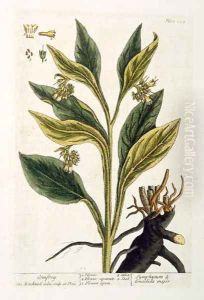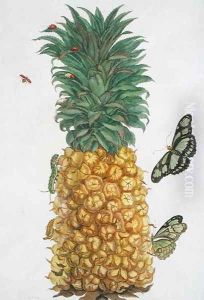Pieter Sluiter or Sluyter Paintings
Pieter Sluiter, also known as Pieter Sluyter, was a Dutch artist born in 1650, whose life and work were emblematic of the Baroque period in European art. While not as widely recognized as some of his contemporaries, Sluiter made significant contributions to the art world of his time, primarily through his detailed engravings and his work as a painter. His artistry was deeply influenced by the cultural and socio-political landscape of the 17th century Netherlands, a period marked by the Dutch Golden Age, which saw a flourishing of arts and sciences.
Sluiter's work is characterized by its intricate detailing and the use of light and shadow, a technique that was quite prevalent among artists of the Baroque era. His engravings, often based on religious and mythological themes, showcased his skill in creating deep contrast and rich textures, making them highly valued among collectors of the time. As a painter, he was known for his portraits and landscapes, which depicted the Dutch countryside with a remarkable realism and sensitivity to the nuances of natural light.
Despite his talents, Pieter Sluiter did not achieve the same level of fame as some of his contemporaries like Rembrandt or Vermeer. This could be partly attributed to the sheer volume of artists working during the Dutch Golden Age, many of whom competed for patronage in a highly saturated market. Nevertheless, Sluiter's works were appreciated by those who knew them, and he managed to carve out a successful career for himself.
Pieter Sluiter passed away in 1719, leaving behind a legacy that, while not as celebrated as that of some of his peers, contributed to the rich tapestry of Dutch art. His works continue to be studied and admired for their craftsmanship and for the window they offer into the Baroque period. As interest in this era's art persists, scholars and enthusiasts alike seek to uncover and reassess the contributions of artists like Sluiter, ensuring their place in the annals of art history.

